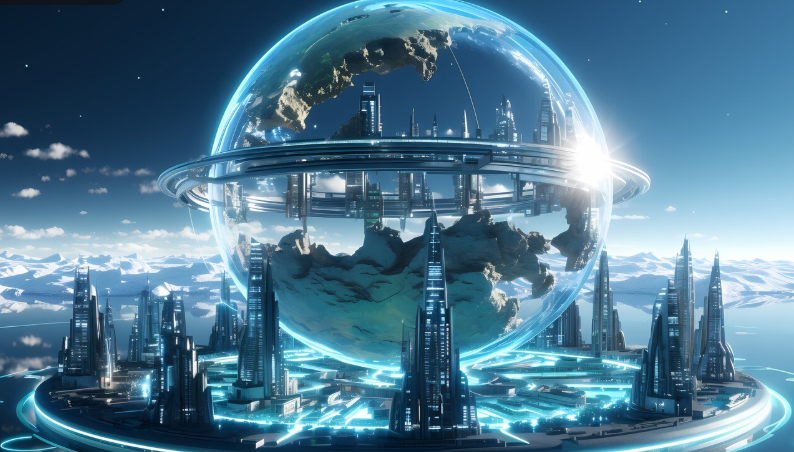As the global population continues to grow and the demands for energy escalate, the need for sustainable, innovative energy solutions has never been more urgent. Climate change, resource depletion, and environmental degradation have made it clear that the traditional reliance on fossil fuels is no longer viable. Instead, the world is shifting towards renewable energy sources, energy efficiency, and emerging technologies that promise to reshape the energy landscape in the coming decades.
By 2050, energy systems will likely look vastly different from today, with advancements in solar power, wind energy, energy storage, and smart grids leading the charge. This article explores the future of energy, the technologies driving the transition, and the strategies needed to create a sustainable energy future for all.
1. The Need for Sustainable Energy
1.1 Global Energy Demand
The global demand for energy is expected to increase significantly over the next few decades. As the world population grows, especially in developing nations, energy consumption will rise. Moreover, the digitization of economies, the growth of emerging industries, and the expansion of electric vehicles (EVs) will all add to the demand for cleaner, more efficient energy solutions.
🔹 Statistics:
- By 2050, the world population is projected to reach 9.7 billion people.
- Energy consumption worldwide is expected to grow by approximately 50% by 2050, according to the International Energy Agency (IEA).
- The transportation sector, particularly the electric vehicle (EV) market, will play a critical role in this increased demand for electricity.
1.2 Environmental Concerns
Fossil fuels, the primary source of global energy today, contribute significantly to carbon emissions, which are a major driver of global warming and climate change. The need to reduce these emissions is essential to prevent environmental catastrophe. Moving away from fossil fuels to sustainable energy sources is not just an option—it is an urgent necessity.
🔹 Key environmental challenges:
- Rising temperatures and extreme weather events due to climate change.
- Air pollution from the burning of fossil fuels, leading to health issues.
- Loss of biodiversity and ecosystems due to industrial energy production.
1.3 Energy Access
Over 750 million people worldwide still lack reliable access to electricity, with many living in remote or underserved regions. Ensuring universal energy access is a critical aspect of global development. Sustainable energy solutions can provide affordable and equitable energy access to these populations, empowering them to improve their quality of life.
2. The Future of Energy: Renewable Sources and Innovations
2.1 Solar Power: The Cornerstone of Sustainable Energy
Solar energy is one of the most promising renewable sources of power. Advances in solar panel efficiency, storage technology, and solar power plants will make it more accessible and affordable to harness the sun’s energy. By 2050, solar power could become the dominant energy source globally, providing clean electricity to billions of people.
🔹 Key innovations in solar energy:
- Perovskite Solar Cells: These next-generation solar cells could be cheaper and more efficient than traditional silicon-based panels.
- Floating Solar Farms: Solar panels installed on bodies of water could maximize land use and boost power generation.
- Solar Roofs: Integrating solar panels into the roofs of homes and buildings could allow individuals to generate their own electricity and reduce reliance on grid power.
2.2 Wind Energy: Harnessing the Power of Nature
Wind energy is another critical renewable source, with wind farms already generating substantial amounts of electricity worldwide. As technology improves, offshore wind farms and taller, more efficient turbines will allow wind power to reach new heights, both literally and figuratively.
🔹 Advancements in wind energy:
- Offshore Wind Farms: These massive wind farms, often located far from shore, capture wind that is stronger and more consistent, resulting in higher energy yields.
- Vertical-Axis Turbines: These turbines can be more compact and efficient in urban environments, allowing for more widespread adoption in cities and rural areas.
2.3 Energy Storage: The Key to a Stable Grid
One of the main challenges of renewable energy sources like solar and wind is their intermittency—they don’t generate power all the time. To solve this issue, energy storage systems, such as batteries, pumped hydro storage, and compressed air energy storage, will become essential in ensuring that energy can be stored and dispatched when needed.
🔹 Innovations in energy storage:
- Lithium-Ion Batteries: Continued improvements in battery efficiency, capacity, and cost will make renewable energy more reliable.
- Solid-State Batteries: These next-generation batteries are expected to be safer and more efficient than conventional lithium-ion batteries.
- Grid-Scale Storage Solutions: Large-scale battery storage systems can help balance supply and demand on the grid, allowing for better integration of renewable energy sources.
2.4 Smart Grids: Creating an Intelligent, Flexible Energy Network
The energy grid of the future will be smarter, more flexible, and more efficient than ever before. Smart grids will integrate renewable energy sources, energy storage systems, and advanced data analytics to optimize the distribution of power. Consumers will also play a greater role in this ecosystem by actively managing their energy usage.
🔹 Key features of smart grids:
- Real-Time Monitoring: Sensors and AI will continuously monitor grid health and energy flow, enabling quick responses to outages or imbalances.
- Two-Way Communication: Smart grids will allow consumers to send excess energy (from solar panels, for example) back to the grid, enabling a more dynamic, decentralized energy system.
- Demand Response: Energy consumers will be able to adjust their usage based on price signals, reducing peak demand and contributing to overall grid stability.
3. Beyond Renewables: Emerging Technologies in Energy
3.1 Nuclear Fusion: The Holy Grail of Clean Energy
Nuclear fusion, the process that powers the sun, promises a virtually limitless and clean source of energy. Unlike nuclear fission (used in current nuclear power plants), fusion does not produce long-lived radioactive waste. While it is still in the experimental stage, fusion could become a reality by 2050.
🔹 Fusion breakthroughs:
- Magnetic Confinement: Technologies like tokamaks are attempting to create the conditions necessary for controlled fusion reactions.
- Laser Fusion: Laser-based fusion experiments, such as those conducted by the National Ignition Facility (NIF), could unlock the path to energy production.
3.2 Hydrogen Power: A Versatile Energy Source
Hydrogen is an energy carrier that can be used for a variety of applications, from fuel cells to power generation. By 2050, hydrogen could play a crucial role in decarbonizing sectors that are difficult to electrify, such as heavy industry, long-haul transportation, and shipping.
🔹 Key developments in hydrogen power:
- Green Hydrogen: Hydrogen produced using renewable energy sources, known as green hydrogen, is expected to become the standard by 2050.
- Hydrogen Fuel Cells: These fuel cells could provide an efficient and clean alternative to fossil fuels for vehicles, buildings, and even entire cities.
3.3 Carbon Capture and Storage (CCS)
Although the primary focus is on reducing emissions, some industries may still rely on fossil fuels in the short term. Carbon capture and storage (CCS) technologies will allow for the capture of carbon dioxide emissions from power plants and industrial processes, preventing them from entering the atmosphere and contributing to climate change.
🔹 CCS technologies:
- Direct Air Capture: Machines that capture CO2 directly from the air and store it underground or convert it into useful products.
- Enhanced Oil Recovery: CO2 captured from the atmosphere can be injected into oil reservoirs to increase oil recovery while sequestering carbon.
4. Challenges and Roadblocks to the Future of Energy
While the potential for sustainable energy solutions is vast, there are several key challenges to overcome:
- High Initial Costs: Many renewable energy technologies, such as solar panels, wind turbines, and energy storage systems, still require significant upfront investment.
- Infrastructure: Modernizing the energy grid and building new infrastructure to support renewable energy and electric vehicles is a massive undertaking.
- Political and Economic Factors: The transition to renewable energy will require political will, international cooperation, and long-term economic planning.
Conclusion: A Sustainable Energy Future
The future of energy is bright, with numerous sustainable solutions that will help meet the growing demands of the global population while addressing the pressing challenges of climate change and resource depletion. From renewable energy sources like solar and wind power to emerging technologies such as nuclear fusion and hydrogen power, the transition to a cleaner, more sustainable energy system is already underway.
By 2050, the energy landscape will be vastly different, with a focus on energy efficiency, smart grids, and innovative storage solutions. However, overcoming the challenges and ensuring that energy is affordable, accessible, and sustainable for all will require collaboration across industries, governments, and societies.
The future of energy is sustainable, intelligent, and adaptable—a crucial part of building a better world for future generations.


